 |
www.ernst-christen.ch
Ernst's Velotouren |
| |
| Home |
| Reiseblog |
| Tourenarchiv |
| GPS-Daten |
| Infos & Tipps |
| Presse |
| Bücher |
| Kontakt |
| Radreise & Fern-radler Forum |
ENGLISH SITES |
| Travelblog |
| Route |
| Contact |
| |
First stage Switzerland - Thailand
Part 11: South China, Dezember 2008 |
| |
|
Herman, a Belgian whom I meet in the Hotel, and I were invited by
two charming ladies to the traditional Chinese Opera. |
 |
|
Picture:
At dinner in the restaurant |
 |
|
Pictures:
Different characters of the traditional Sichuan Opera |
 |
|
Picture:
A scene of arguments out of one of the four presented topics |
|
From
Chengu I rode on highway 213 through cold misty landscapes to Leshan.
Since weeks my tour leads through very dense populated regions and
crosses every day innumerable villages and cities. Since the Yellow
River there is no more space for natural landscapes. |
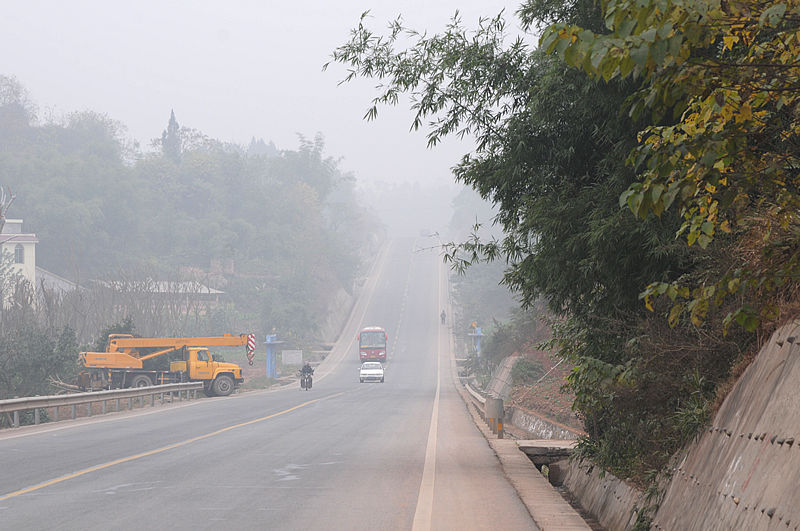 |
|
Picture:
On road 213 through very dense populated regions towards south |
 |
|
Picture:
Fishermen on the river Minhe in front of Leshan |
|
The
main attraction of Leshan is the Giant Buddha looking onto the confluence
of the rivers Daduhe and Minhe. The statue is 71 m high and 28 m
wide what makes the Leshan Buddha the biggest one in the world.
The head alone has a height of 15 m and a width of 10 m, the ears
are 7 m long and a whole football team could be placed on a big
toe. In the year 713 the buddhist monk Haitong started to build the statue hoping that the presence of a Buddha would ease the unpredictable dangerous current of the confluence of the two rivers and save the fishermen of the deadly whirls and shoals. Indeed the knocked out rocks regulated the riverbed and calmed the waters. But gullible Buddhists, internally roused by a wild religious fire, believe that the waters are calmed only due to the presence of the Giant Buddha. |
 |
|
Picture:
View from above to the visitors platform and the stairs |
 |
|
Picture:
View from the middle of the stairs |
 |
|
Bild:
View from below |
 |
|
Picture:
About 900 km yet to go until Kunming |
|
As
soon as I had left the basin of Sichuan once again I had to ride
up and down over steep mountains. And this would not change for
the next 2500 km until reaching the border of Thailand. |
 |
|
Picture:
In the ascent of a long and high pass |
 |
|
Picture:
Some of the high passes are shortened through long tunnels (up to
several kilometers long) |
|
Two
days behind Leshan I reached the deep and winding valleys of the
Yangtze River and arrived in Yunnan province. The Yangtze River is the longest river in Asia and besides the Amazon and Nile the third longest river in the world. On its whole lenght of 6380 km it flows entirely through China. Its source is on the Qinghai-Plateau of Tibet and its mouth is in the East China Sea north of Shanghai. |
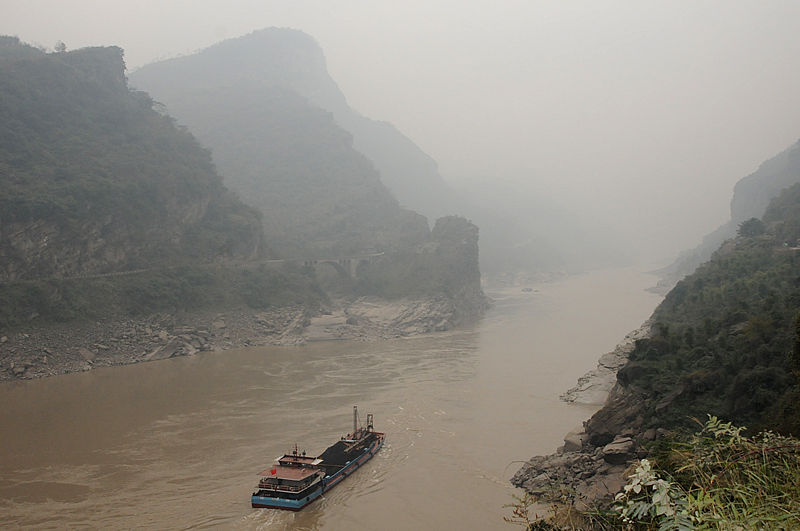 |
|
Picture:
Drizzle weather in the gorges of the Yangtze River |
 |
|
Picture:
Drizzle, mist and not even 5° C at 2000 m height in the Wulianfeng
mountains close to the city of Zhaotong. Since days I was riding
in such a weather and really long for sunshine and warmer temperature. |
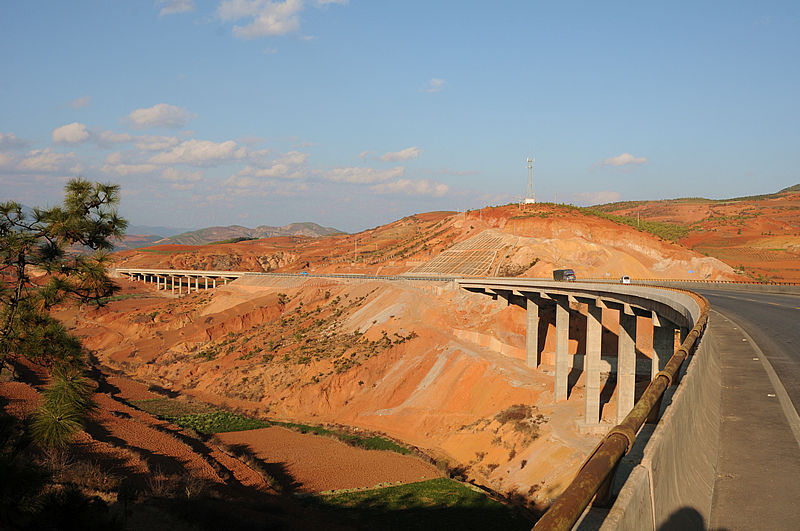 |
|
Picture:
Two passes and three valleys further the sky opened and it became
nicely warm, even here at 2500 m height. |
 |
|
Picture:
The city of Huize after sunset at over 2100 m height and roughly
200 km ahead of Kunming |
 |
|
Picture:
The last 2 days to Kunming I was riding together with Martin from
Holland. He was touring in the year of its 50th birthday from Holland
to Vietnam. |
 |
|
Picture:
Shortly ahead of Kunming we met Gin und Bun from Singapore who are
managing a big farm and they invited us for a delicious lunch in
their home. After leaving this place Martin
and I split up again because he
was riding into Kunming while I went directly to the south. |
|
Along
the road farmers from the Lisu hilltribe sell their agricultural
products: delicious fruits like mangos, sugar cane, pineapples etc. |
 |
|
Picture:
Farmer women from the Lisu hilltribe |
 |
|
Picture:
Finally I have reached weather allowing to wear shorts! In
the valleys of southern Yunnan the daily maximum temperature rises even more than 20° C and
the mountains are overgrown by dense jungle. |
 |
|
Picture:
Green landscapes on the way to the border of Laos |
 |
|
Picture:
Central crossroad in the small city of Ning'er south of Kunming |
|
On my way through Yunnan I had to cross daily several passes and
rode through the partly still very dense tropical jungle of the
autonomous district Xishuangbanna. Here are living many different
ethnic tribes like Dai, Han, Yi, Hani, Lahu, Blang, Jino, Yao, Miao,
Bai, Hui, Va etc. Each one of these tribes has its own language
and culture. The name "Xishuangbanna" comes from the language
of the Dai and means "twelve thousand rice fields". |
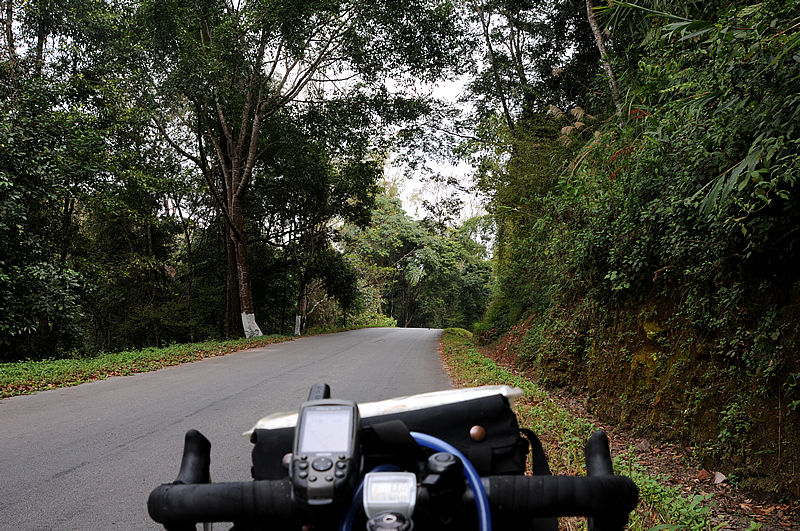 |
|
Picture: Riding
through the partly dense tropical jungle in the autonomous district
Xishuangbanna |
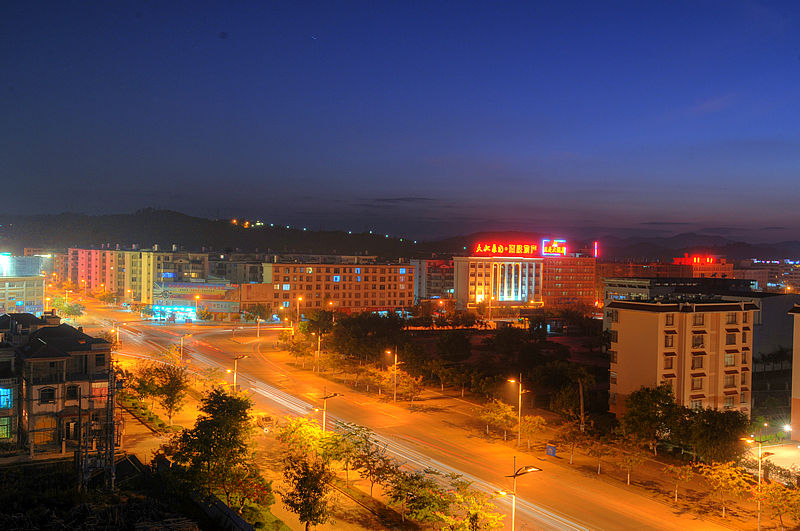 |
|
Bild:
Simao at dawn. Only 3 days to go to the border of Laos. |
|
This sugar cane seller is peeling about 3 meters of sugar cane for me. But to chew sugar cane one needs very good teeth which unfortunately don't last long time chewing sugar cane on a daily basis. I really love to chew sugar cane and can easily process 2 meters in only 10 minutes. Even locals find it hard to chew any faster... |
 |
|
Picture:
Sugar cane seller in the small city of Xiaomengyang |
 |
|
Bild:
Taking a rest in a rubber tree plantation |
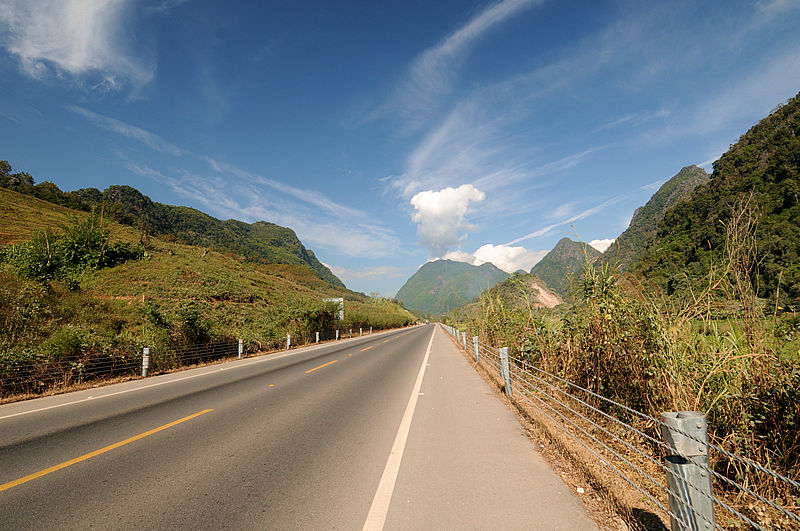 |
|
Picture:
On very good road to Mengla and further to the border of Laos |
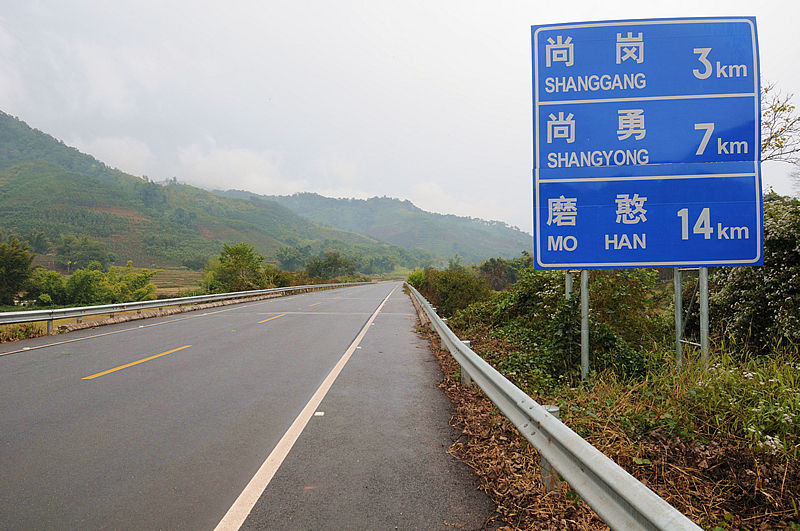 |
|
Picture:
Only 14 km to Mohan and to the China-Laos border. "Good bye
China", I enjoyed riding here. |
Next
page / Part 12: Laos & Thailand |
| top |